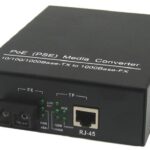Cyber Security is the practice of defending information systems from cyber threats. It is a rapidly growing field, with an ever-growing list of threats to consider.
Cyber security is one of the most critical issues facing our world today. The threat landscape is constantly changing, and so must our defences. Cyber security is about protecting business and personal data, critical infrastructure systems, and systems used by citizens. It’s also about protecting government agencies and critical national infrastructures such as power grids and banking systems.
Cybersecurity is a $1 trillion industry, but it has never been more important than it is today.
Importance of Cybersecurity
The importance of cybersecurity cannot be overstated. With the increase in cyber-attacks and malware, businesses are constantly looking for ways to secure their information and systems. When a business is not prepared for a cyber attack, it can have devastating consequences that can cost the company millions of dollars and damage its reputation.
Cybersecurity is a multifaceted approach to keeping your data safe from hackers. It includes physical security measures such as securing entrances, windows, and doors; software security measures such as installing anti-virus software; network security measures such as encrypting data through firewalls, using nolagvpn; and personnel security measures such as background checks on employees who handle sensitive information.
Top 30 Most Commonly Asked Cybersecurity Job Interview Questions For Freshers
1. What is Cybersecurity
Cybersecurity is the practice of preventing unauthorized access, use, or disclosure of computer networks and other digital systems. It encompasses a range of activities, from technical measures such as firewalls and intrusion detection systems to organizational policies and procedures.
2. What are the elements of Cybersecurity
The practice of cybersecurity comprises three main elements: information security, network security, and application security.
- Information security focuses on protecting the confidentiality, integrity, and availability of data.
- Network security protects against unauthorized access to systems and data through the use of firewalls, intrusion detection/prevention systems (IDS/IPS), and other protective measures.
- Application security ensures that applications running on computers are not susceptible to attack.
3. What are the advantages of Cybersecurity
Cybersecurity provides many advantages, both practical and symbolic. Practical advantages include the prevention of cybercrime, the protection of Personally Identifiable Information (PII), and the safeguarding of critical infrastructure. Symbolic advantages include the promotion of trust in digital systems, deterrence against cyberattacks, and enhancing the public image.
4. What is the objective of Cybersecurity
The main objective of cybersecurity is to ensure that businesses can operate effectively and efficiently in a digital world. Cybersecurity involves understanding the risks associated with cyberattacks and implementing measures to protect information assets.
5. What is the difference between Risks, Threats & Vulnerabilities
Risks are the potential consequences of threats being realized. They can include loss of data, damage to equipment, and disruption of operations.
Threats are potential dangers that could harm the organization or its personnel.
Vulnerabilities are flaws in an information system or application that could be exploited by a threat.
6. What is a Firewall
A firewall is a security measure that helps protect information from unauthorized access. It can be used to protect an organization’s computer networks and data from intrusions by unauthorized users. A firewall can also be used to control the flow of traffic between different parts of a network.
7. What does XSS stand for? How to prevent it
Cross-Site Scripting (XSS) is a type of vulnerability in which malicious users can inject scripts into web pages to execute by unsuspecting users visiting the page. XSS is particularly dangerous because it allows attackers to take control of web pages and steal user information or blackmail them.
The XSS attacks can be prevented in many ways:
- Use Secure Coding Guidelines for Web Applications, which help to ensure that your web applications are coded securely.
- Review user input carefully and filter out anything that could be used in an XSS attack.
- Make sure that you have a robust security plan in place for your website, including authentication and anti-spoofing measures.
8. What is Cryptography
Cryptography is the practice of encrypting and decrypting data using complex mathematical algorithms. It is used to ensure the confidentiality, integrity, and authenticity of sensitive information from unauthorized access.
9. Define Traceroute
Traceroute is a tool used to measure the time it takes for packets of data to travel from one point to another on a network. It can also be used to determine which servers are experiencing problems.
10. Difference between HIDS and NIDS
- HIDS stands for high-definition malware detection, while NIDS stands for network intrusion detection system.
- HIDS are typically used to detect malware that is installed on a computer, while NIDS detects malicious activity that occurs on a network.
- HIDS can be used to monitor activity on systems, while NIDS can only detect activity that takes place on the network.
- NIDS can be used to track malicious behavior across multiple networks and systems, whereas HIDS is typically only used to monitor one system at a time.
11. Who are White Hat, Black Hat, and Grey Hat Hackers
White Hat hackers are those who use their cyber skills only for good objectives. They may find security flaws and then report them so that they can be fixed, or they may use their skills to hack into systems in order to help protect them from attack.
Black Hat hackers are those who break into systems and networks with the intent to cause harm. They often seek to exploit vulnerabilities to gain access to sensitive information or cause chaos and disruption.
Grey Hat hackers are a particularly nebulous category of hackers. In general, they do not commit malicious acts, but they may still break into systems without authorization in order to test them or learn more about them.
12. Explain SSL
SSL (Secure Sockets Layer) is a cryptographic protocol used to create an encrypted connection between a user’s browser and a website. SSL ensures that all information transmitted between the user’s browser and the website is private, eliminating the risk of third-party interception.
13. What does data leakage mean
Data leakage is the accidental release of confidential or sensitive data from a system. This can occur through a number of methods, including human error, hacking, and system malfunction. Data leakage can have serious consequences for organizations, as it can lead to unauthorized access and sharing of data.
14. What are Botnets
A botnet is a group of infected devices that are controlled by a single cybercriminal. A botnet can be used to carry out attacks on behalf of the cybercriminal, or it can be used to send spam emails or launch other malicious activities.
15. What is Bruteforce attack
Brute force attacks are attacks that involve trying every possible combination of inputs to gain access to a protected resource.
16. What do you mean by honeypots
A honeypot is a computer system that is intentionally set up to attract and trap malicious activity. This can be done by installing software that monitors common attack vectors, or by setting the computer up with a unique IP address and waiting for attackers to come knocking.
17. What’s the difference between Vulnerability Assessment and Penetration Testing
Vulnerability Assessment is a process of identifying and assessing the risks associated with vulnerabilities in systems. A Vulnerability Assessment is conducted prior to deploying new systems or applications onto an organization’s network.
Penetration Testing is a process of testing the security of systems by exploiting known vulnerabilities. It is typically used after new systems or applications are deployed onto an organization’s network in order to test for potential vulnerabilities.
18. What does port scanning mean
Port scanning is the practice of systematically testing a computer network’s ports to look for open ports or vulnerabilities. Port scanning can help identify security issues and possible points of entry into a network.
19. Tell about the layers of the OSI model
The 7 seven layers of the OSI model are the following:
- Physical Layer
- Data Link Layer
- Network Layer
- Transport Layer
- Session Layer
- Presentation Layer
- Application Layer
20. How to reset a password-protected BIOS configuration
There are many ways of resetting BIOS configuration. Here are the following ways:
- Remove the CMOS battery.
- Using software.
- By using a motherboard jumper.
- Also can use MS-DOS.
21. What is a MITM attack
A MITM attack is an attack where the attacker intercepts and alters the communications between the victim and the desired target. This can be done through either a physical or cyberattack.
22. What is ARP and How it works
ARP (Address Resolution Protocol) is a network protocol used to resolve IP addresses. It allows computers on a network to communicate with each other by specifying the corresponding IP address for a given MAC address.
23. What are Null Sessions
Null sessions are a type of online session in which neither party participates. In other words, the session is inactive and does not result in any data being exchanged. Null sessions are used in scenarios where it is necessary to ensure that no data is exchanged between two parties, without actually having to meet in person.
24. List different types of Cyberattacks
Here are some of the most common types of cyber security attacks:
- Malware
- Cross-Site Scripting (XSS)
- Denial-of-Service (DoS)
- Domain Name System Attack
- Man-in-the-Middle Attacks
- SQL Injection Attack
- Phishing
- Session Hijacking
- Brute Force
25. Define SSL vs TLS
SSL and TLS are two different types of protocols used to secure data communication. SSL is a protocol that was developed in the early 1990s, while TLS is a more recent protocol. The main difference between SSL and TLS is that SSL is used for secure HTTP communication, while TLS is used for secure socket Layer (SSL) and Transport Layer Security (TLS) communications.
26. What do you mean by Shoulder Surfing
Shoulder surfing refers to the act of exploiting vulnerabilities in a system by using information that is known about the target. Cybersecurity professionals should be aware of shoulder surfing, as it can occur when users access information that is not supposed to be accessible. This can include passwords, user IDs, and other sensitive data.
27. What Is Phishing
Phishing is a type of cybercrime that involves tricking someone into disclosing personal information such as their login credentials, bank account numbers, or email addresses. Phishers use social engineering techniques to get targets to reveal sensitive data.
28. Tell the common difference between hashing & encryption
Hashing is a process of transforming an input string into a numeric representation or hash value. The hash function should be uniform and collision-free so that two different inputs will result in two different hash values.
Encryption is used to convert sensitive information or data into a format that is not readable or understandable. The encryption algorithm should be secure against known attacks, such as substitution and message splitting.
29. What is two-factor authentication(2FA)
Two-factor authentication, or 2FA, is a security measure in which users are required to enter two pieces of information in order to gain access to their accounts. The first piece of information is usually a password, but 2FA can also include something like a key fob or a mobile app. The second piece of information is usually something that the user has on them, like a security code from an app or a key ring.
30. What is Network Sniffing
Network sniffing refers to the process of intercepting and decoding network traffic. Sniffers can be used for a variety of purposes, including security auditing, troubleshooting, and investigations. Network sniffing is often done by administrators or security professionals in order to gather information about the network traffic flowing through a machine.









